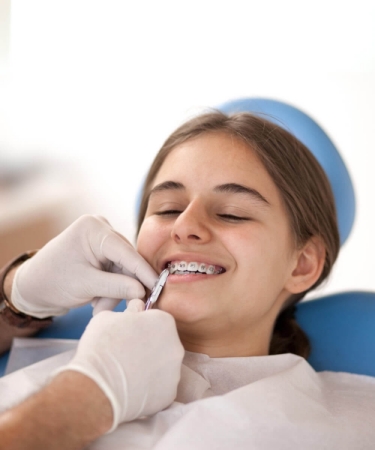
Bite alignment plays a crucial role in overall dental health and function. Misaligned bites, or malocclusions, can lead to various dental issues, including uneven wear on teeth, jaw pain, and difficulty chewing. Fortunately, orthodontic treatments like braces and clear aligners are designed to improve bite alignment effectively. In this blog, we will explore how these treatments work, the types of malocclusions they address, and the benefits they offer.
Understanding Bite Alignment
Bite alignment refers to how the upper and lower teeth fit together when the mouth is closed. An ideal bite allows the upper teeth to overlap the lower teeth slightly, ensuring even pressure and proper chewing function. However, many people experience malocclusions, which can be classified into several types:
- Class I Malocclusion: The bite is normal, but the teeth may be crowded or spaced improperly.
- Class II Malocclusion (Overbite): The upper teeth protrude significantly over the lower teeth.
- Class III Malocclusion (Underbite): The lower teeth extend beyond the upper teeth.
- Crossbite: Some upper teeth sit inside the lower teeth, which can occur on one or both sides of the mouth.
Each type of malocclusion can lead to various functional and aesthetic issues, making it important to seek treatment.
How Braces Work to Improve Bite Alignment
Braces consist of brackets, wires, and bands that gradually move teeth into the correct positions. Here’s how they improve bite alignment:
- Gentle Pressure: Braces apply consistent, gentle pressure to the teeth over time, encouraging them to shift into their ideal positions. This pressure helps to correct misalignments and improves bite function.
- Adjustment Mechanism: Regular visits to the orthodontist allow for adjustments in fine-tuning the pressure and direction of movement. This can be critical for addressing specific bite issues and achieving optimal alignment.
- Comprehensive Coverage: Braces can address multiple issues simultaneously, including crowded teeth, gaps, overbites, underbites, and crossbites, making them a versatile treatment option for improving overall bite alignment.
- Long-Term Results: Braces can help maintain proper bite function and aesthetics once the desired alignment is achieved, leading to long-lasting results.
How Aligners Improve Bite Alignment
Clear aligners like Invisalign have become a popular alternative to traditional braces. They offer a more discreet treatment option while effectively improving bite alignment. Here’s how aligners work:
- Custom Fit: Aligners are custom-made to fit each patient’s teeth using advanced 3D imaging technology. This ensures that each aligner is designed to move teeth incrementally toward the desired position.
- Gentle Pressure: Like braces, clear aligners apply gentle pressure to teeth, promoting gradual movement. Each set of aligners is typically worn for about two weeks before progressing to the next set, allowing for continuous alignment adjustments.
- Removable Convenience: Aligners can be removed for eating, drinking, brushing, and flossing, making it easier to maintain good oral hygiene. This convenience can encourage compliance, as patients are less likely to feel restricted in their diet.
- Discreet Appearance: Clear aligners are virtually invisible, making them appealing to individuals who prefer a more discreet treatment method. This can boost confidence during treatment, particularly for adults and teens.
Benefits of Improved Bite Alignment
Improving bite alignment through braces or aligners offers several benefits:
- Enhanced Functionality: A properly aligned bite allows for better chewing and speaking, improving overall function and comfort.
- Reduced Wear and Tear: Correct alignment helps distribute bite forces evenly across teeth, reducing the risk of uneven wear, fractures, or chips.
- Relief from Jaw Pain: Proper bite alignment can alleviate jaw discomfort and pain associated with misalignment, such as temporomandibular joint (TMJ) disorders.
- Aesthetic Improvements: Straightening teeth and correcting bite issues enhance overall facial aesthetics, boosting confidence and self-esteem.
Conclusion
Improving bite alignment with braces and aligners is an effective way to address various dental issues and enhance overall oral health. Both treatment options offer unique benefits, allowing patients to choose a method that suits their lifestyle and preferences.
If you’re experiencing bite alignment issues in Bhopal, consulting with an orthodontist can help you determine the best treatment plan for your needs. With Smile Gallery’s Best Braces Treatment in Bhopal, you can enjoy a healthier, more functional smile that enhances your quality of life.







